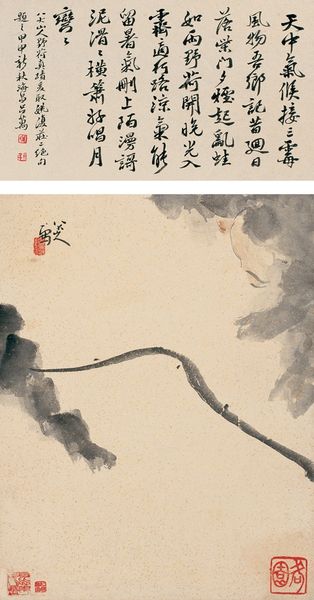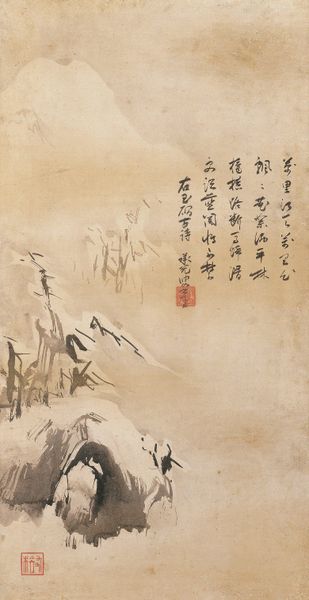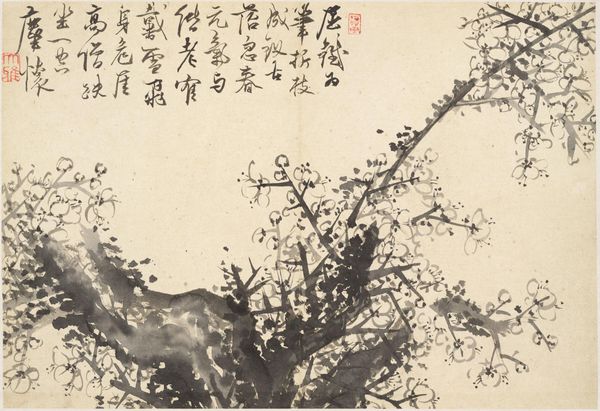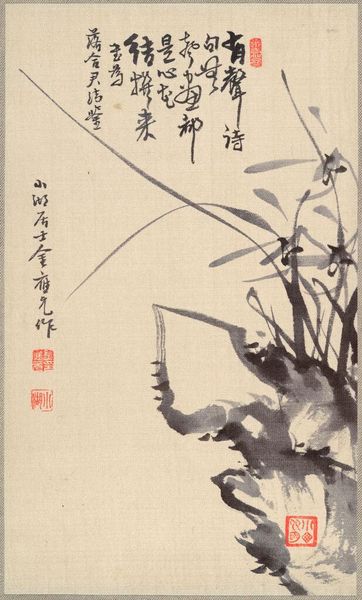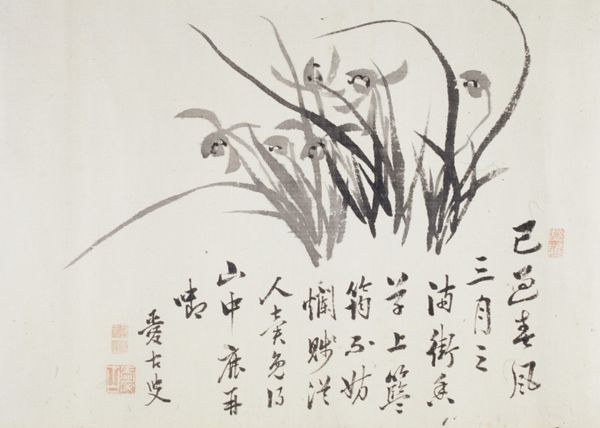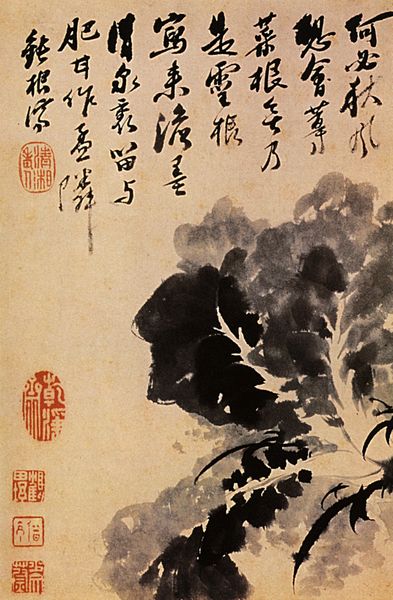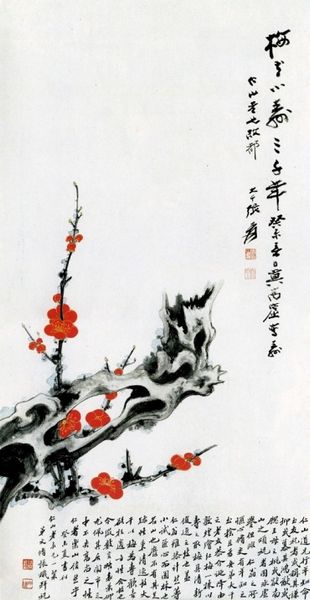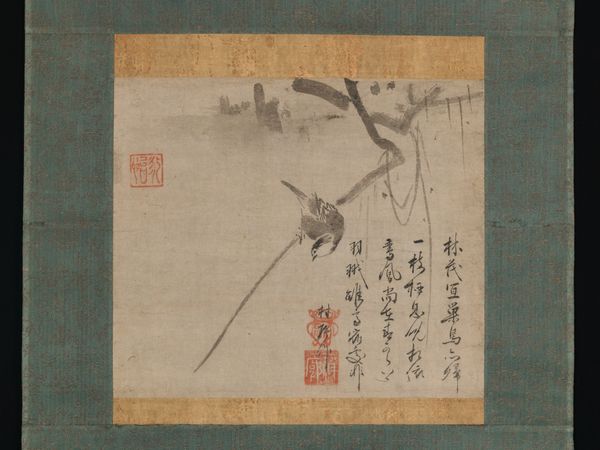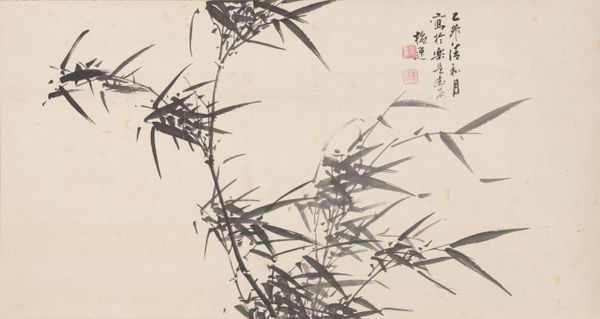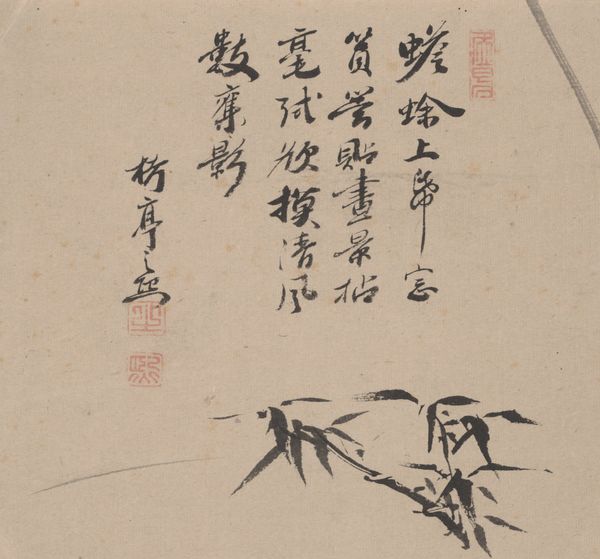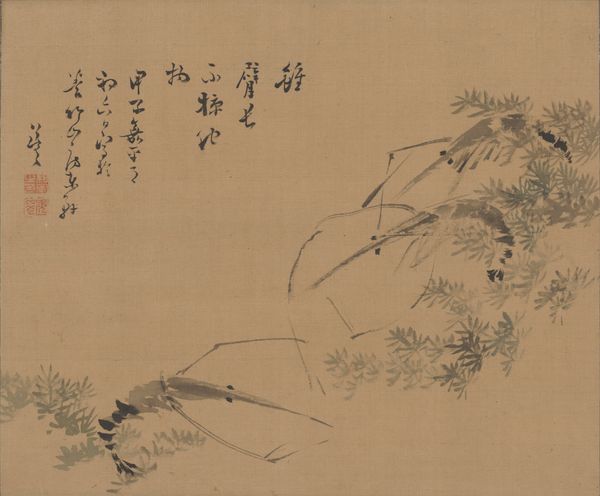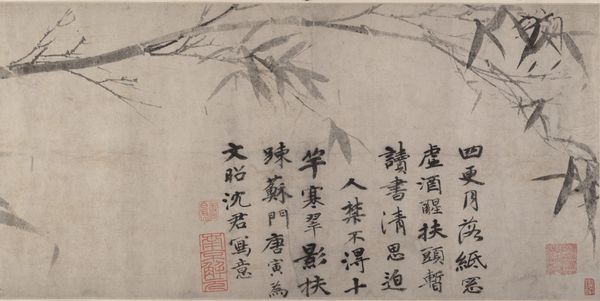
painting, paper, watercolor, hanging-scroll, ink
painting
asian-art
landscape
ukiyo-e
japan
figuration
paper
watercolor
hanging-scroll
ink
orientalism
line
japanese
watercolor
calligraphy
Dimensions: 46 11/16 × 17 in. (118.59 × 43.18 cm) (image)76 1/2 × 22 7/8 in. (194.31 × 58.1 cm) (mount, without roller)
Copyright: Public Domain
Curator: The painting before us is attributed to Minagawa Kien, possibly from 1803, and it's titled *Kingfisher and Maple Leaves*. Created with ink and watercolor on paper, this hanging scroll resides here at the Minneapolis Institute of Art. Editor: Immediately, I'm struck by the contrast of that bold waterfall with the delicate, almost ephemeral maple leaves and the watchful kingfisher. The composition feels so poised, but also fragile. Curator: I find it insightful how the artist positions nature as both subject and symbol. These motifs were politically charged within the socio-cultural milieu of the Edo period. In paintings like this one, there's a certain artistic expression that indirectly questions societal norms and hierarchies. Editor: You know, that kingfisher seems to be perched right on the precipice, maybe symbolic of liminality within Edo society or more broadly Japan. There's a quiet resistance almost. It's positioned above calligraphy—how would you contextualize the text and its significance here? Curator: Absolutely! The text underscores Kien's place within artistic and intellectual circles. It is an intimate exchange, further establishing a dialogue between creator, nature, and viewer—crucial components within the sphere of ukiyo-e, the ‘pictures of the floating world’. By acknowledging its influence and societal functions through its visual language, *Kingfisher and Maple Leaves* prompts questions on artistic interpretation versus accepted representation. Editor: Yes, and I love that it does that with such a light touch. Nothing is overly declarative, yet everything resonates with a palpable sense of observation and feeling. The artist is capturing a precise moment in time, but I would wager, in socio-cultural terms as well. Curator: I agree completely. Its legacy continues precisely because of this gentle prodding –– the delicate suggestion for its viewers to examine how the intersections of art, nature, and self might impact prevailing social norms and established artistic doctrines. Editor: A subtle resistance, indeed! One can easily imagine how even a quiet artwork such as this, circulated amongst informed circles, might nurture discourse at large.
Comments
No comments
Be the first to comment and join the conversation on the ultimate creative platform.
